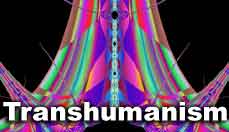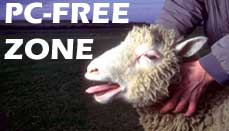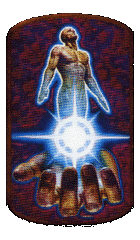Alex Linder Audio Books
Open Letters
Yggdrasil's Library
THE ORION PARTY
The Prometheus League
- Humanity Needs A World Government PDF
- Cosmos Theology Essay PDF
- Cosmos Theology Booklet PDF
- Europe Destiny Essays PDF
- Historical Parallels PDF
- Christianity Examined PDF
News Blogs
Euvolution
- Home Page
- Pierre Teilhard De Chardin
- Library of Eugenics
- Genetic Revolution News
- Science
- Philosophy
- Politics
- Nationalism
- Cosmic Heaven
- Eugenics
- Future Art Gallery
- NeoEugenics
- Contact Us
- About the Website
- Site Map
Transhumanism News
Partners




A review of: N.J.MACKINTOSH
(ed.), 1995, Cyril Burt: Fraud or Framed? Oxford : Oxford University Press.
Pp. vii + 156. ISBN 0 19 852336 X. stlg19-99.
By Chris Brand
Review published in Nature 377, 6548, 394-395, October 5, 1995.
Sir Cyril Burt (1883-1971) thought that the broad heritability of IQ was
high_ yielding his notorious correlation of .77 between monozygotic twins
reared apart (MZA's). Yet he estimated the narrow heritability as only .52:
parents could pass on genetically to their children only a half of their IQ
advantage (or disadvantage). Partly by this route, parents could transmit a
third of their advantage (or disadvantage) in socio-economic status (SES).
Countering regression to the mean, the class system would be refreshed by
social mobility. The majority of the brighter children would come from
`working class' homes and children's own IQ's would account for some 50 per
cent of eventual SES variance in their own generation. General intelligence
(g), which Burt had once found to relate to speed of intake of simple
perceptual information, was frankly more important in life than were
`personality traits'; but there were other sources of variation in mental
abilities ("group factors"), and education should accord with children's
ability profiles. There were also innate differences between races in g; but
"they are small" in comparison with the big differences between individuals.
Progressive enough for Burt to be knighted under a Labour government, Burt's
position infuriated rising social scientists and geneticists who abjured
anything that could be linked to `negative' eugenics. "Wouldn't it be great if
it could be shown that Burt was really just an old fraud!" muttered one London
educationist to Arthur Jensen in 1957. After Burt's death, closer scrutiny of
his key work led at last to its being denounced as involving casualness or
fraud, and bolder accusations of `fascism' soon followed. Here, the eminent
learning theorist, Nicholas Mackintosh, leads a hand-picked team of scholars
in a re-examination of Burt's character and figurework. Under-reporting of the
details of what Burt himself often admitted to be "precarious" studies had
always limited the scientific usefulness of Burt's research reports; and
Burt's .77 figure is replaced today by the .78 estimate from the 43 MZA pairs
studied in Minnesota. On the other hand, the charge of fraud against Burt has
been rejected by most experts as `not proven', chiefly because Burt's figures
have crazily rough edges that no true fraud would have failed to smooth
down_notably the .77 figure and also correlations for height and weight that
remained the same across two big changes in sample size. Accepting all this,
Mackintosh's contributors try to focus mainly on what only probably happened:
"we are not trying a case in a court of law," they declare. As a verbal token,
the term `fabrication' is often used, rather than `fraud'. Thus liberated, the
authors all find something quite interesting to say. Hans Eysenck colourfully
exposes a level of deviousness in committee work that would put Burt well
within the top 50% of vice-chancellors and right up among the equally
fabrication-prone Kepler, Newton and Freud. Stephen Blinkhorn rehearses quite
brilliantly, if a little self-indulgently, how Burt had every right to feel
aggrieved at being written out of the history of factor analysis by Spearman
and Thurstone. Nicholas Mascie-Taylor agrees to exonerate Burt from the
best-known charge that his figures on social mobility were too perfect; but he
details convincingly Burt's `deliberate deceptiveness' about his inadequate
data on social mobility; and Jensen finds Burt a "brilliant eccentric" who was
inexplicably and inexcusably "furtive." The book as a whole is fairly and
indeed beautifully written. Such points, however, advance no very general
claim about Burt. Eysenck, the giant of trait psychology, implicitly
acknowledges the problem when he admits two quite different `sides' to Burt's
character. Fortunately, Mackintosh, who writes three of the chapters, has more
of an agenda and realizes the need to come off the fence _at least in his
epilogue. Taking Burt's 1966 MZA study first, Mackintosh establishes a
magisterial authority by a sustained defence of the possibility that Burt had
twin data from the 1920's. All that is missing from Mackintosh's account is
any consideration of how, in 1966, Burt might have increased the number of MZA
pairs on which relevant and supportive data were available. He could have
embraced some of the better-separated pairs reported in J. Shields'
Monozygotic Twins (1961). Hi-jacking of Shields' twins would explain Burt's
otherwise peculiar statement that his 1966 paper would "bring together the
evidence now available both from our own studies and from more recent
investigators"; and why he quite openly told Eysenck in 1971 that "our own
studies" were mostly complete by 1939. It would also explain Burt's wish, in
1969, while "calculating data on twins for Jencks", to have access to
University College Library: simply, he needed access to the copious raw data
in Shields' book from which he (or Miss Conway) had once learned the crucial
correlation of .77 that corresponded with Burt's own. Plainly, at least
something as `devious' as this happened; but no-one knows what. Having cleared
Burt of fabrication of the twin data, however, Mackintosh maintains suspense
for the volume with an engaging new line of attack. Perhaps the biggest
difficulty for Burt-baiters is that Burt was spectacularly correct on so many
points. How could he possibly have managed without data? So it is reasonable
that an apparent error on Burt's part should arouse suspicion. As background
to his 1969 figures (unsatisfactory,as usual) on declining educational
standards in Britain from 1914, Burt explains that children's g levels had not
changed. To demonstrate this required him to have tested children in the
1960's with his 1914 tests; and Burt claims to have done that. However, when
this sort of exercise has been undertaken by others, as first in the 1940's,
g-scoring has actually been rising at some two IQ points per decade. With this
as the strongest case that Mackintosh finds he can make for fabrication, many
would-be accusers will hold their peace. After all: the secular IQ rise has
occurred not on Burt's tests but chiefly on others where important scoring
opportunities can be gained by guessing and/or skipping harder items instead
of persevering; Burt plainly resisted the temptation to recognize an IQ-type
rise that would helpfully have thrown `declining educational standards' into
sharper relief; and even James Flynn, the chief exponent of the rise, does not
himself believe it to have been in true intelligence_only in whatever
conventional IQ tests measure. Burt thus actually notches up yet another
success_at least while agreeing with Flynn is Mackintosh's touchstone. Eysenck
and Jensen themselves have admittedly interpreted Flynn's work as indicating a
substantial g rise, so Mackintosh might squeeze more testimony to Burt's
psychopathy from them. Properly considered, however, Mackintosh's academic
whodunit marks a further step towards Burt's rehabilitation.
Transtopia
- Main
- Pierre Teilhard De Chardin
- Introduction
- Principles
- Symbolism
- FAQ
- Transhumanism
- Cryonics
- Island Project
- PC-Free Zone





Prometheism News



